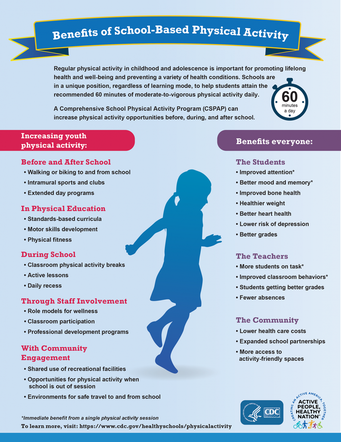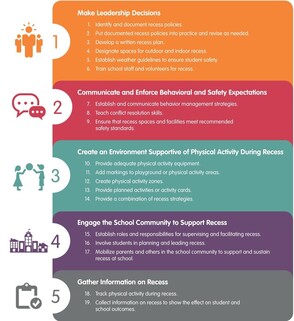Importance of Recess, Play, and Active Classrooms
Research has shown that physical activity opportunities throughout the school day can improve: attendance, student motivation, classroom behaviors, social and emotional learning, and cognitive performance. Not only does time spent being active not hinder student learning, it enhances it. You can even incorporate physical activity into various content areas!
our other webpages for Classroom Teachers
- Class Management: Our main page on class management. We also have Tools for Assessing Behavior and Techniques for Forming Groups.
- Domains of Learning: Example verbs and learning objectives for a variety of learning domain taxonomies.
- English Language Learners: Information on how to teach ELL students, regardless of the content area.
- Examples of How to Make Learning Active: Examples of combining other content areas with physical activity.
- Games and Activities: Compilation of websites that provide resources on physical education activities.
- Icebreakers and Teambuilding Videos: Name games, icebreakers, teambuilding, and conflict resolution activities. Directions are also available via PDF.
- Stress Management Techniques: Information and resources on easy stress management techniques for students.

